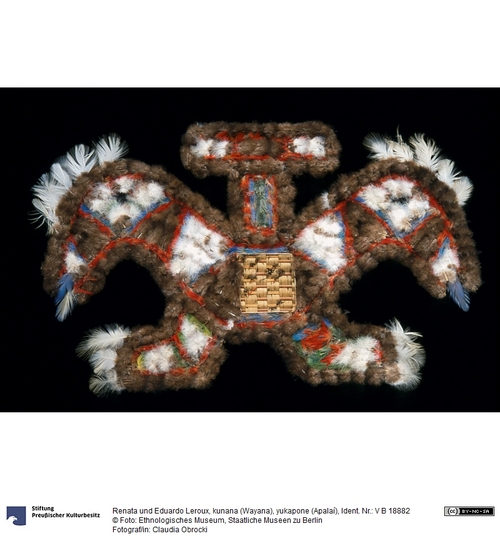Wayana-Aparai Ameisen-Rahmen/Federmosaik in der Form eines doppelköpfigen zoomorphen Wesens, für Initiationsriten von Jungen und Mädchen verwendet ("Cunana"). Der Initiand muß die Schmerzen ertragen, die die in der Mitte befestigten, noch lebenden großen Ameisen durch ihre Bisse verursachen, wenn der Rahmen auf seine Haut gedrückt wird.
Die Federn sind mosaikartig in Blöcken auf beiden Seiten des die Grundlage bildenden Flechtwerks geklebt. Die braunen Mutum-Daunen bilden die Umrandung und teilen den rahmen in Segmente, die mit weißen Daunen und roten, grünen und blauen Deckfederchen ausgelegt sind. Krallen und Schopf des Wesens bilden weiße Garca-Deckfedern, die 2 Zungen bestehen aus blauen Arara-Deckfedern, die Augen bestehen aus schwarzen Federchen.
Sammler: Leroux, Renata und Eduardo
en

